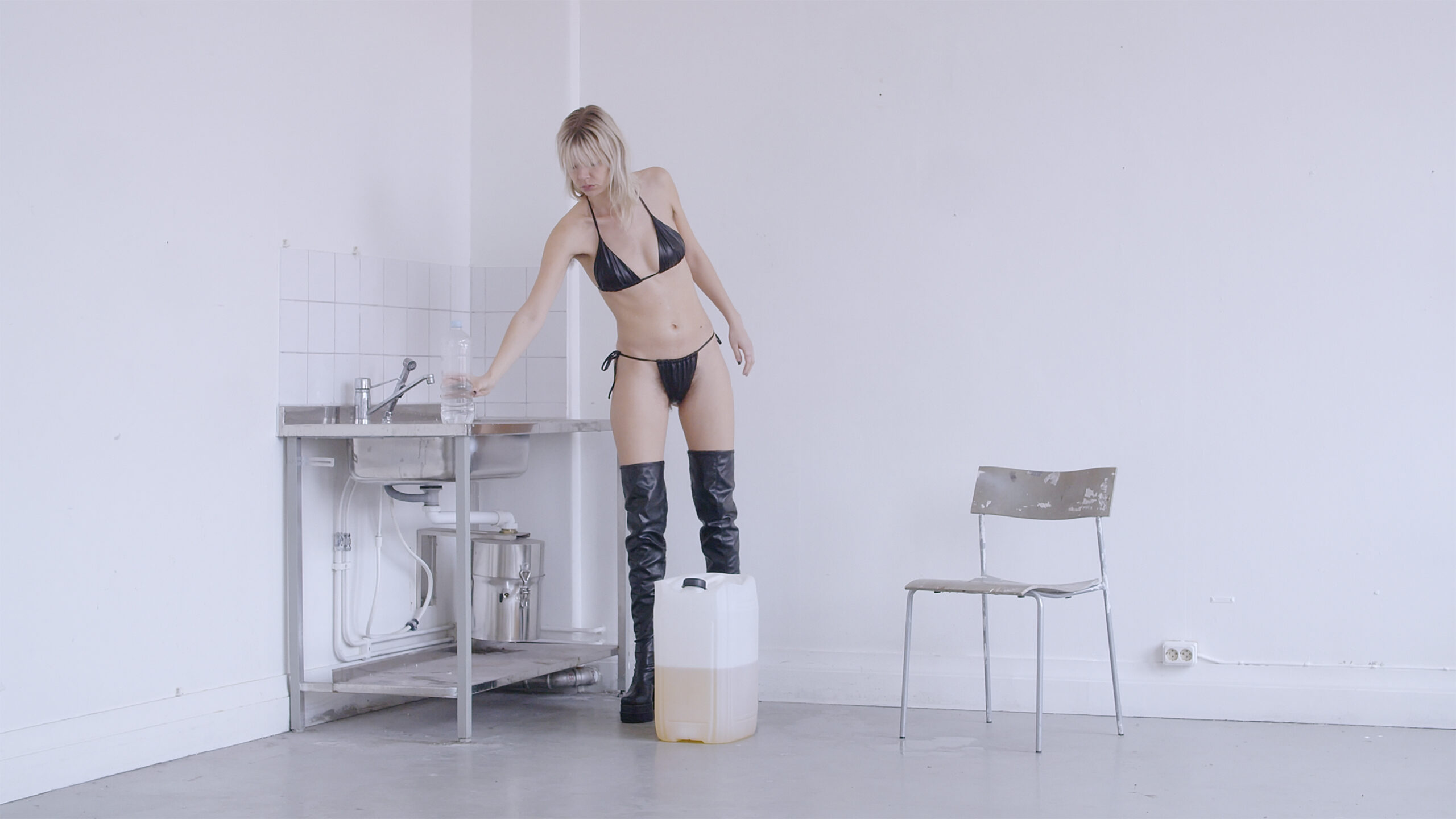
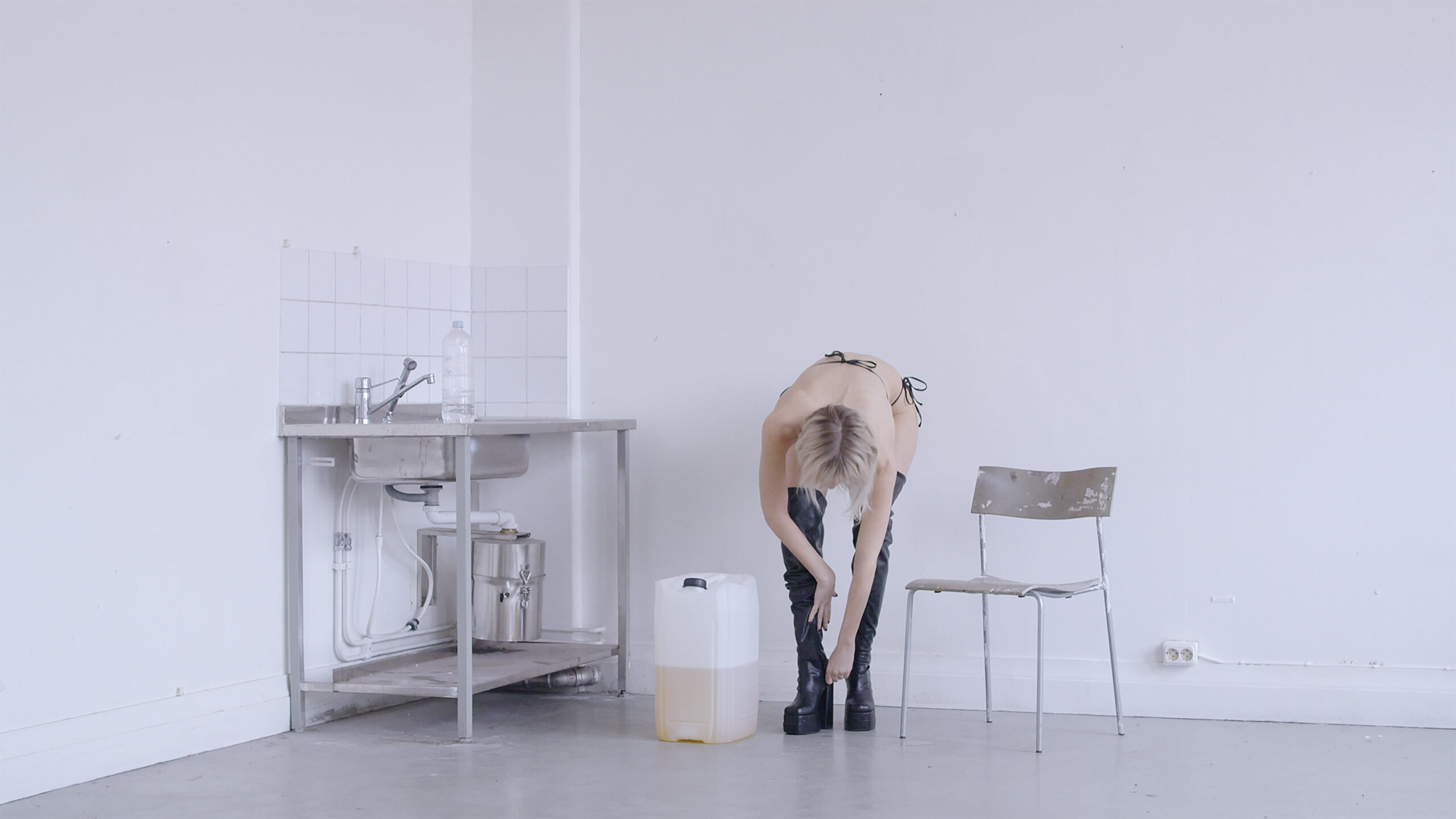
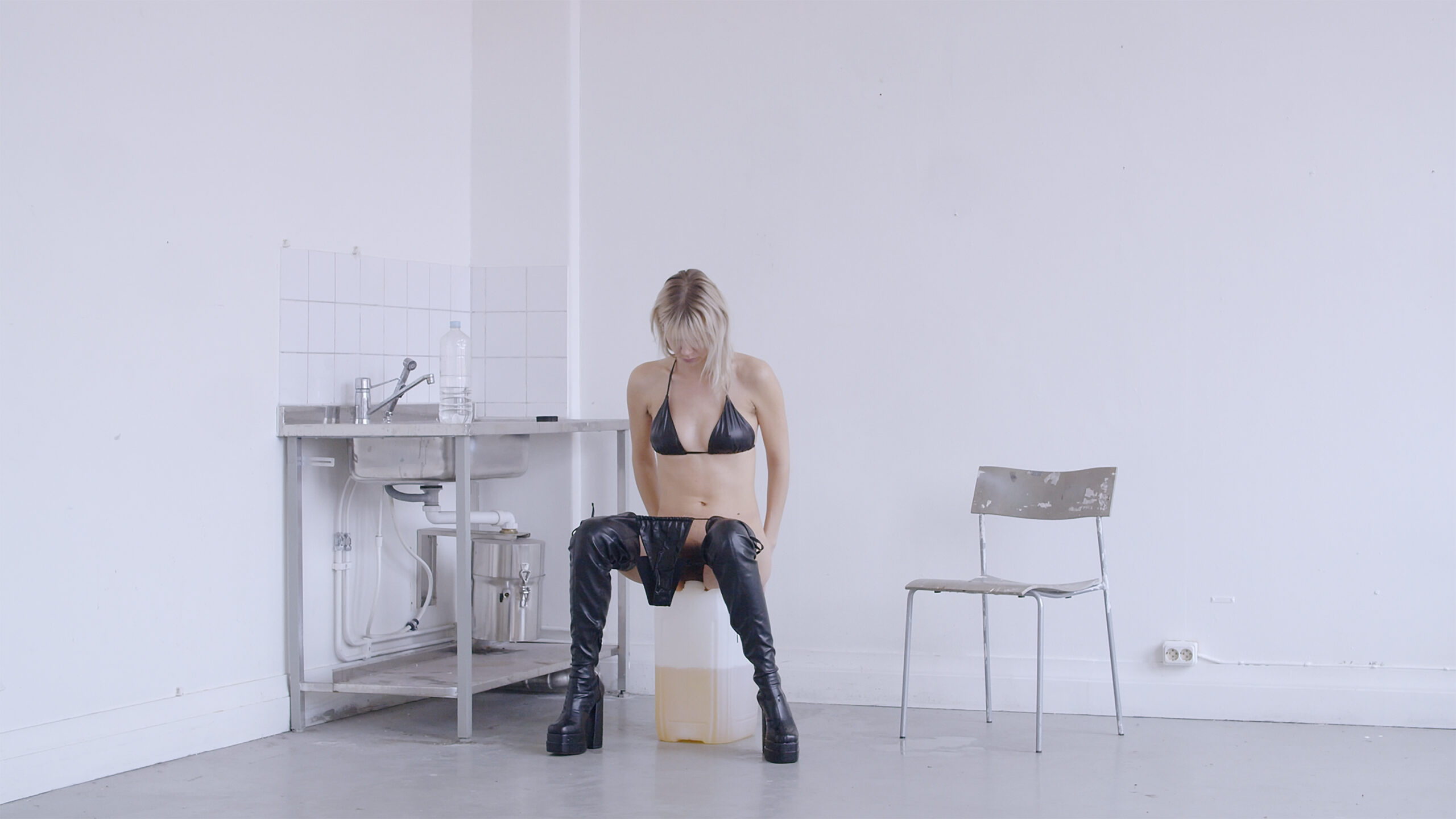
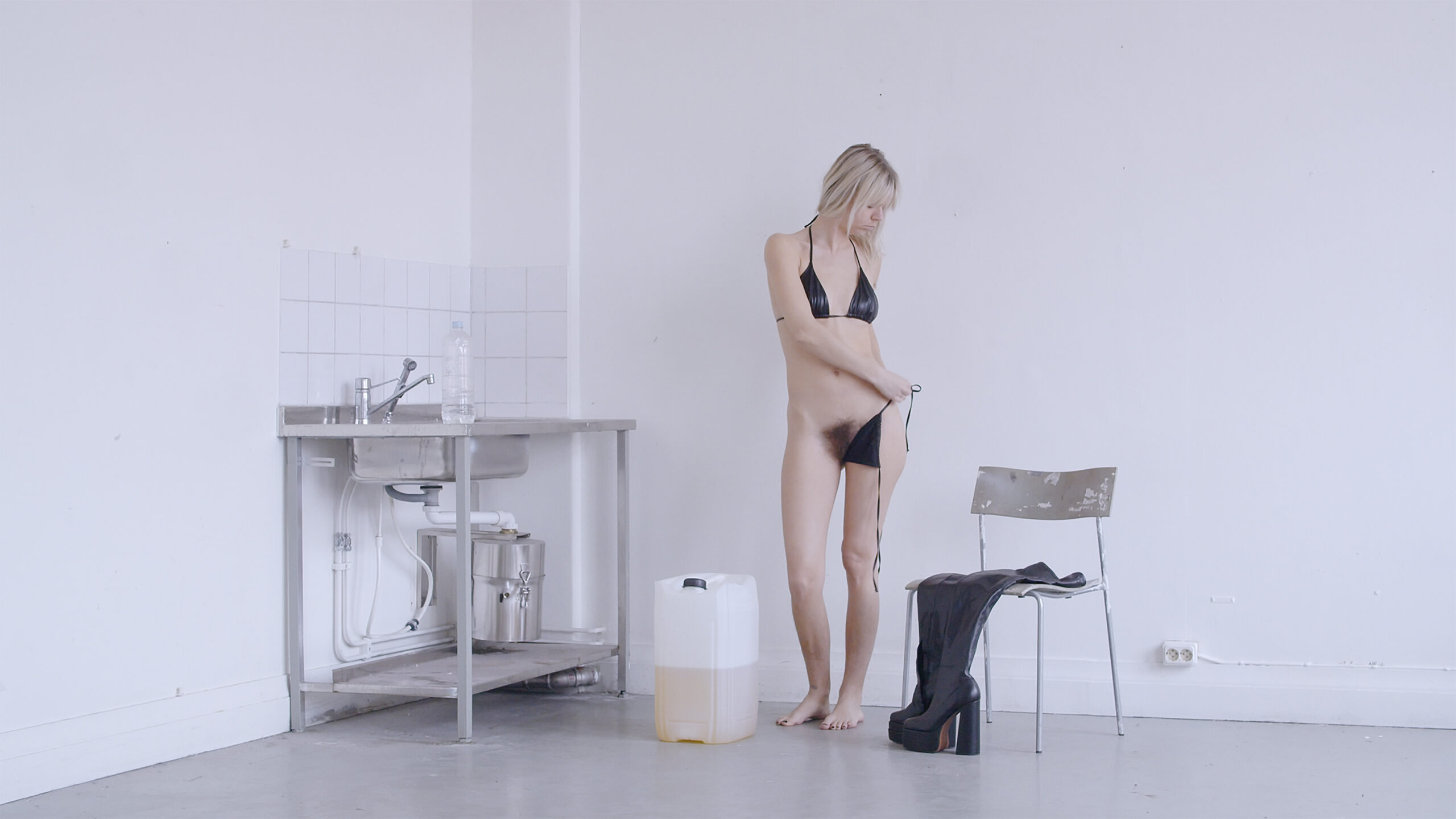
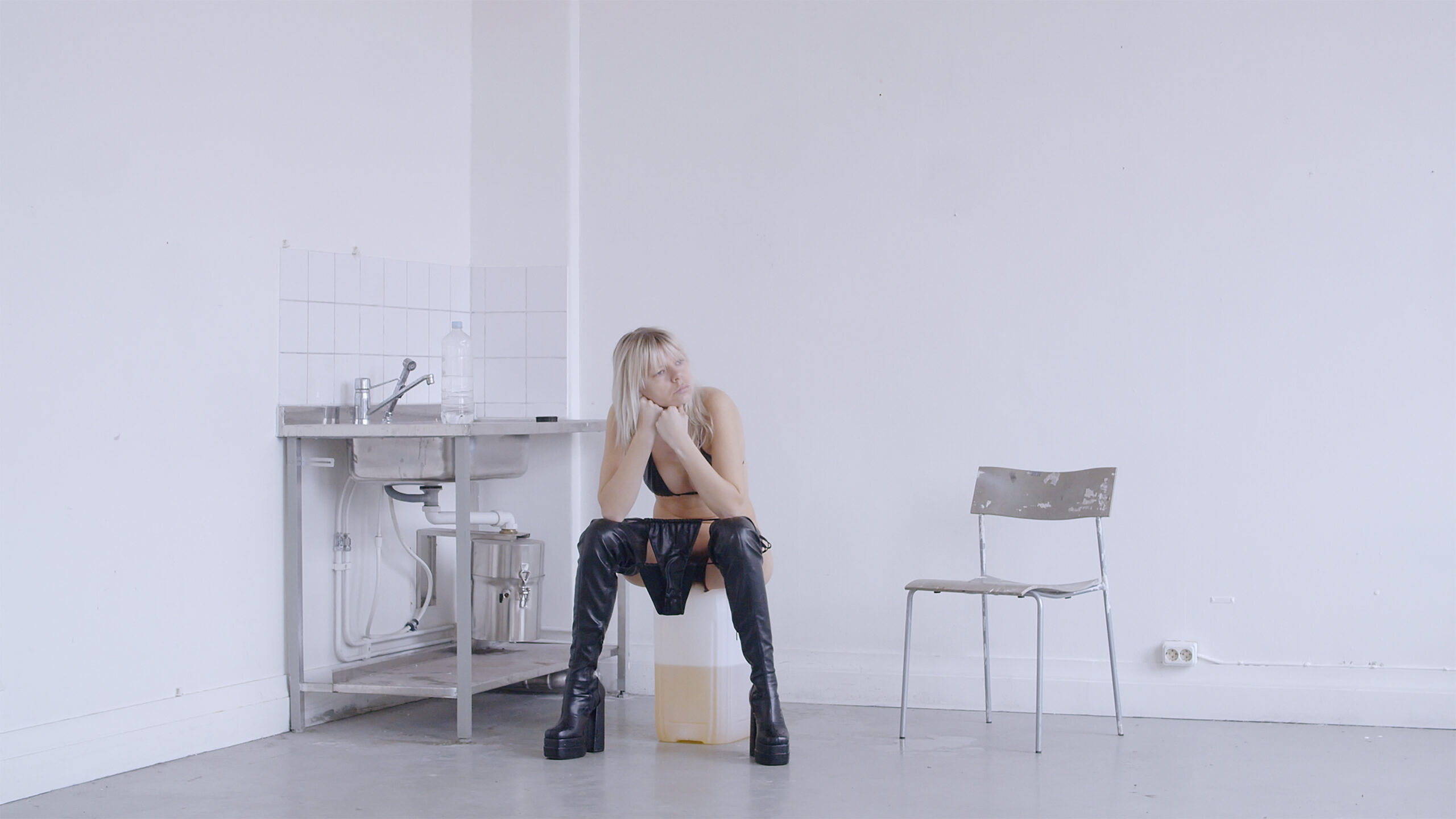
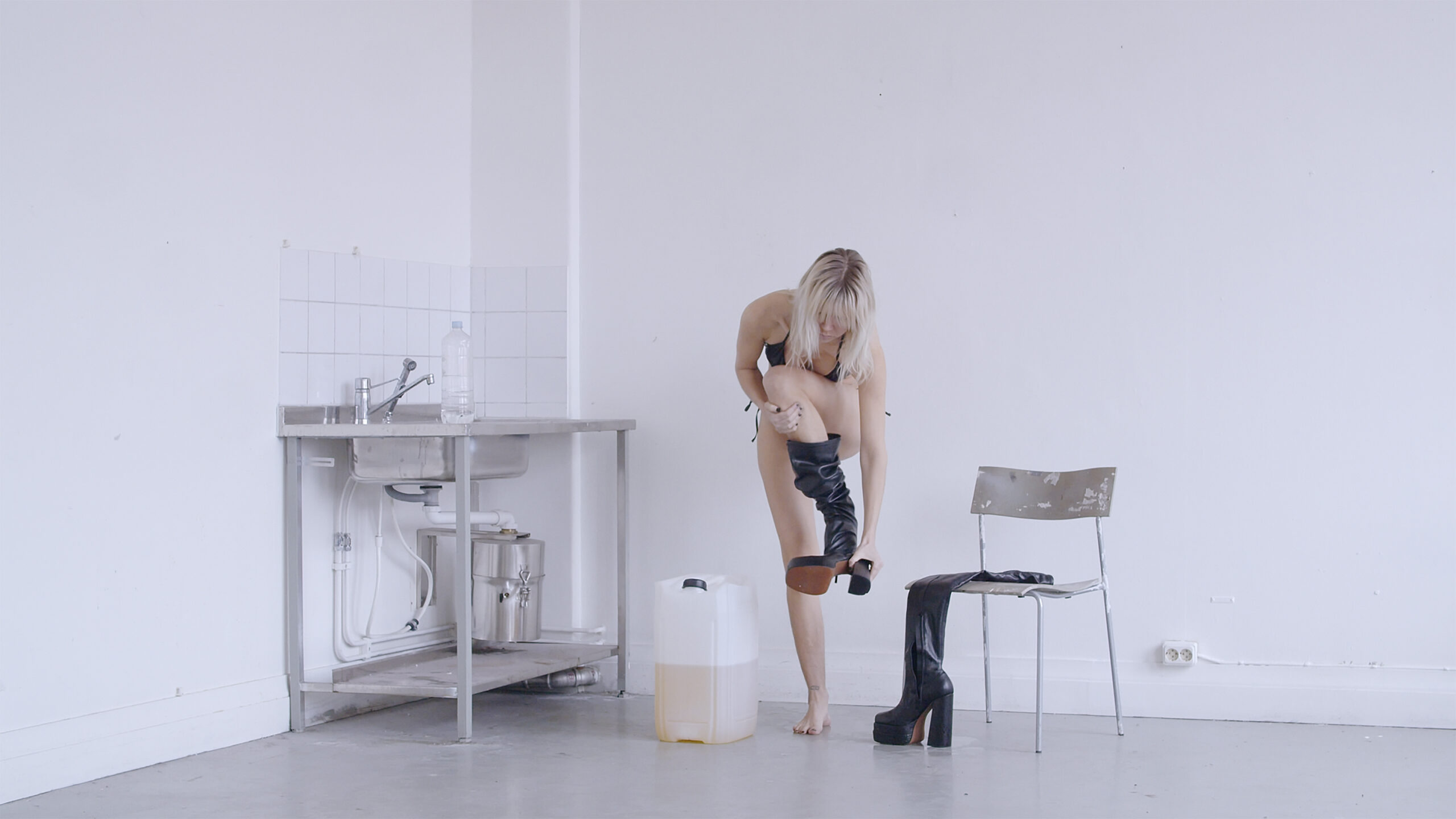
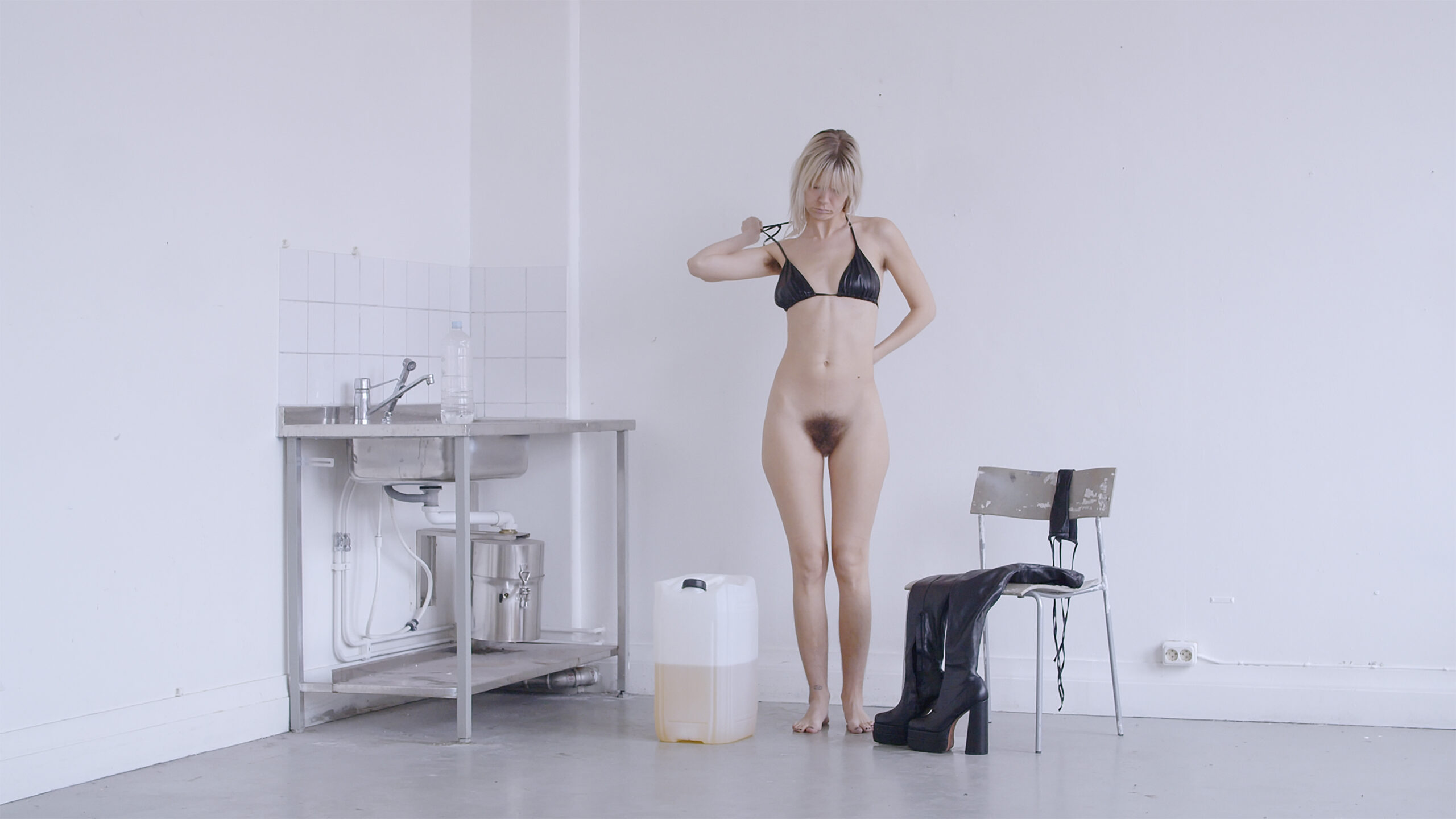
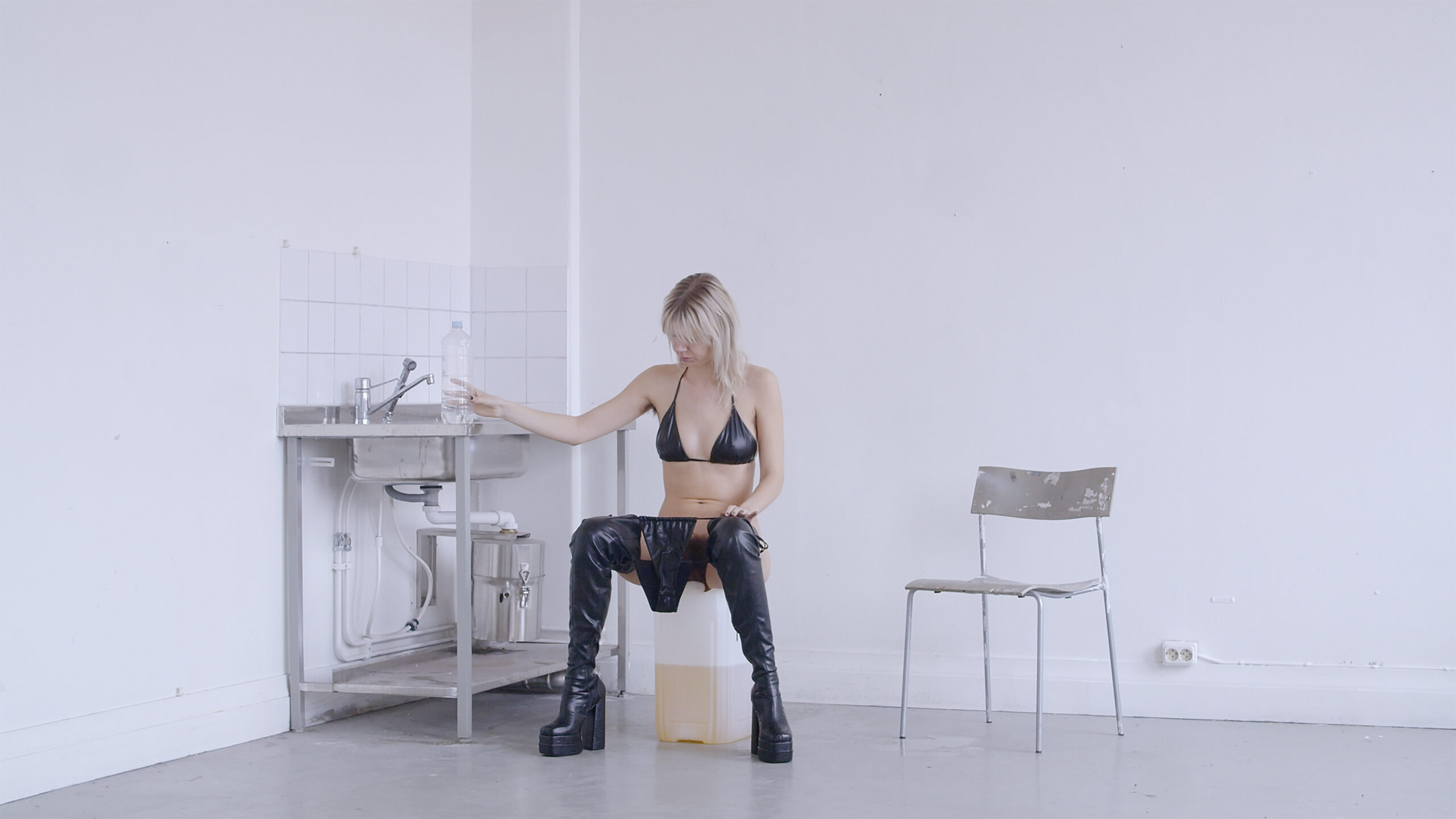
The Act is What I Live For








Photography and photographing are completely different things.
Not comparable to each other.
The act is what I live for.
The photograph is what makes me start over.
In the act of photographing I enter an alter-ego in order to express what I want to mediate.
Through her I manage to touch upon a twist between anger, confrontation and humor, all created within the act.
A conflict occurs in the act of transforming into a photograph since the technique itself is limiting.
It is framing, fixing.
The documented act, the photograph itself, has become something else during this process.
It mediates and humiliates at the same time.
So I start over
Repeat myself
The conflict is always present, like a driving force.
The act is what I live for.
So I repeat myself
And start over
#1 The Act
High heels
Leather bikini
Painted nails
For as long as I had my own camera I have been making self-portraits.
For as long as I remember photography has been my way of escaping reality, my own body and “self”.
It has been my way of confronting and liberating myself in relation to a certain gaze, a fixed body and its expectations.
Always in relation to someone else.
The male gaze.[i]
A construction
A role
An imagination
I am not born a “woman”.[ii]
I act like one.[iii]
It is a mourning process[iv]
The photographic act of mine has changed over time.
It has not always been about entering an alter-ego.
When I started making self-portraits my intention was to
“capture an authenticity”
rather than
“staging a photograph”
I always felt the urge and need to depict and collect myself in different moods and situations.
To fix them, to save them.
Now I feel the urge and need to stage and collect myself in different clothing and positions.
To confront others, to state myself.
Dressing
Drinking
Pissing
The transformation happened gradually and unconsciously.
Since dressing up as someone else is less vulnerable and exposing than being the “authentic me”.
Since being a naked female body indicates to connotations that was not my intention from the beginning.
There is nothing as exposing as an (self)image.
Though it is performing as someone else.[v]
It made me change my direction and the use of my body in a different way.
It made me come up with the alter-ego as a strategy and artistic tool.
To state and position myself through the photographic act of mine.[vi]
Repeat
Repeat
Repeat
#2 The Alter-Ego
Half dressed
Half naked
I always felt more sexual than what is expected to be.
I aways felt I did not fit into what is expected of me.
As a “woman”.
By entering my alter-ego I get the ability to be the exposed and outrages one.
She is the one positioning herself, being sexually alluding at the same time.
I am allowed to be and express myself through her.
She is a performer
I am not
There is a conflict between us
Photography has become my way to position myself.
My alter-ego, and use of my own body, are my tools to transact it.
It is about confronting the gaze as much as it is a way of settling with myself.
Still, there is a distance to all components.
A conflict between the photograph, the alter-ego and the body itself.
They are not me but still they are mine.
Hers as well as my own body is associated with the camera, the photographic depiction.
There is a conflict of not wanting to uphold the male gaze but to resist it.
There is a conflict in its transformation.
So I start over
The conflict is always present.
Like a driving force.
She is the one wearing the bikini
I am the one bearing the pain
#3 The Repetition
High heels on
High heels off
The act drives me mad.
It gets me so uplifted that reality (whatever that is) disappears.
I end up wanting to do it again, repeat it all over.
The feeling of it not being fully captured is constant and present already during the act.
I end up with the conflict of not being able to document it but to mediate something through it.
Another
Mourning
Process
I have to force myself entering the alter-ego again though I am longing for it.
Sometimes when forcing myself I never look at the outcome to avoid the feeling of disappointment.
The act drives me mad.
I always felt there is a distance in the interpretation of my photographs.
I always felt that my intention is separated from its interpretation.
So I repeat myself
I tend to proceed from this conflict and distance in my photographic confrontation.
Therefore I always come back to the photographic act, repeat myself in front of the camera.
The repetition has become another tool of mine within my practice.
The act is no longer about documenting an authenticity.
Rather to perform a confrontation, make it a statement and repeat it all over.
So I start over
By pulling the trigger there is a sculpture captured rather than a depiction.
I am not capturing a moment, I am sculpting it.
Therefore photographs are constructed statements.[x]
The constructed photograph is a tool to possess power.[xi]
I am the one possessing power
My work are statements.
Photographic sculptural statements.
So I have to do it all over.
For me to remain in the feeling of possession.
Possessing me
As a way of possessing you
I immerse myself with my own piss.
As a way of cleansing myself of the male gaze
I make it my ritual.
As a way of reclaiming myself
So I have to do it all over.
As a way of remaining in the process
Zipping up
Zipping down
The act drives me mad.
So I repeat myself
And start over
The act is what I live for.
[i] Mulvey, Laura. Visual pleasure and narrative Cinema. Screen, Vol 16, Issue 3. 1975.
[ii] de Beauvoir, Simone. The Second Sex. Vintage Classics. 2015.
[iii] Butler, Judith. Performative Acts and Gender Constitution: An Essay in Phenomenology and Feminist Theory. Theatre Journal, Vol. 40, No. 4. 2009.
[iv] Björk, Nina. Under det rosa täcket. Bonnier Pocket. 2013.
[v] Jones, Amelia. The “Eternal Return”: Self-Portrait Photography as a Technology of Embodiment. Signs, Vol 27, Nr 4. 2022.
[vi] By positioning oneself through photography I refer to Axel Karlsson Rixon, stating the photographer being in control of the artistic decisions in relation to where, when and with whom the work is made. Karlsson Rixon, Axel (former Annica). Queer Community through Photographic Acts. 2016.
[x] Levin, Laura. The Performative Force of Photography. Photography and Culture, Vol 2, Issue 3. 2009.
[xi] Sontag, Susan. On Photography. Penguin Books. 2008. p.4: “To photograph is to appropriate the thing photographed. It means putting oneself into a certain relation to the world that feels like knowledge – and, therefore, like power.”